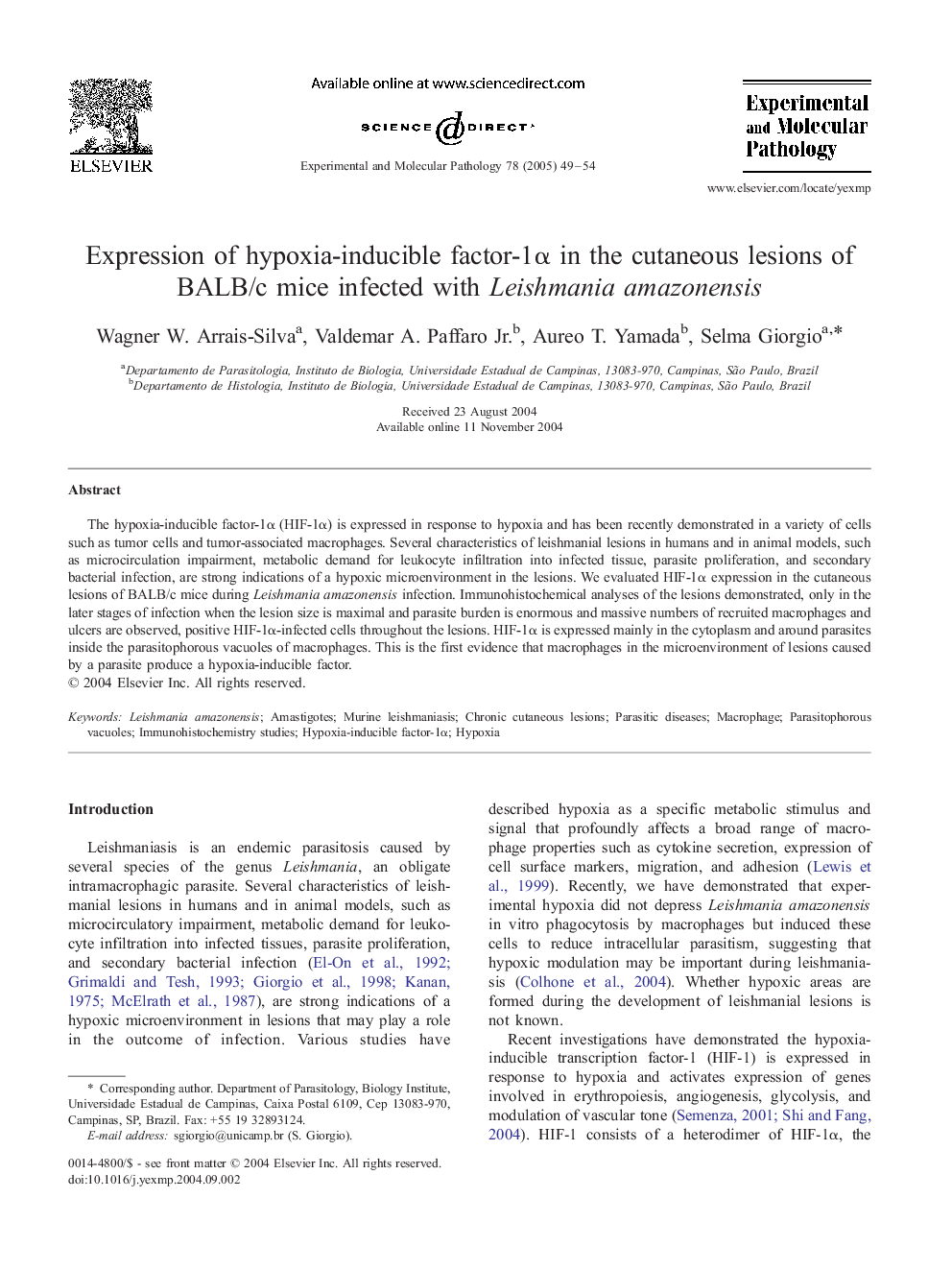| Article ID | Journal | Published Year | Pages | File Type |
|---|---|---|---|---|
| 9102801 | Experimental and Molecular Pathology | 2005 | 6 Pages |
Abstract
The hypoxia-inducible factor-1α (HIF-1α) is expressed in response to hypoxia and has been recently demonstrated in a variety of cells such as tumor cells and tumor-associated macrophages. Several characteristics of leishmanial lesions in humans and in animal models, such as microcirculation impairment, metabolic demand for leukocyte infiltration into infected tissue, parasite proliferation, and secondary bacterial infection, are strong indications of a hypoxic microenvironment in the lesions. We evaluated HIF-1α expression in the cutaneous lesions of BALB/c mice during Leishmania amazonensis infection. Immunohistochemical analyses of the lesions demonstrated, only in the later stages of infection when the lesion size is maximal and parasite burden is enormous and massive numbers of recruited macrophages and ulcers are observed, positive HIF-1α-infected cells throughout the lesions. HIF-1α is expressed mainly in the cytoplasm and around parasites inside the parasitophorous vacuoles of macrophages. This is the first evidence that macrophages in the microenvironment of lesions caused by a parasite produce a hypoxia-inducible factor.
Keywords
Related Topics
Life Sciences
Biochemistry, Genetics and Molecular Biology
Clinical Biochemistry
Authors
Wagner W. Arrais-Silva, Valdemar A. Jr., Aureo T. Yamada, Selma Giorgio,
